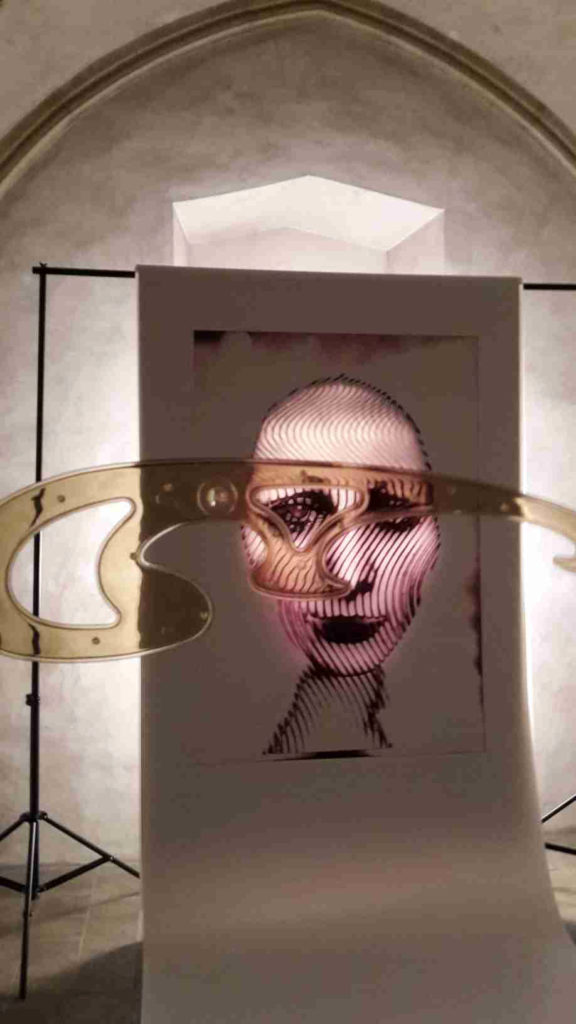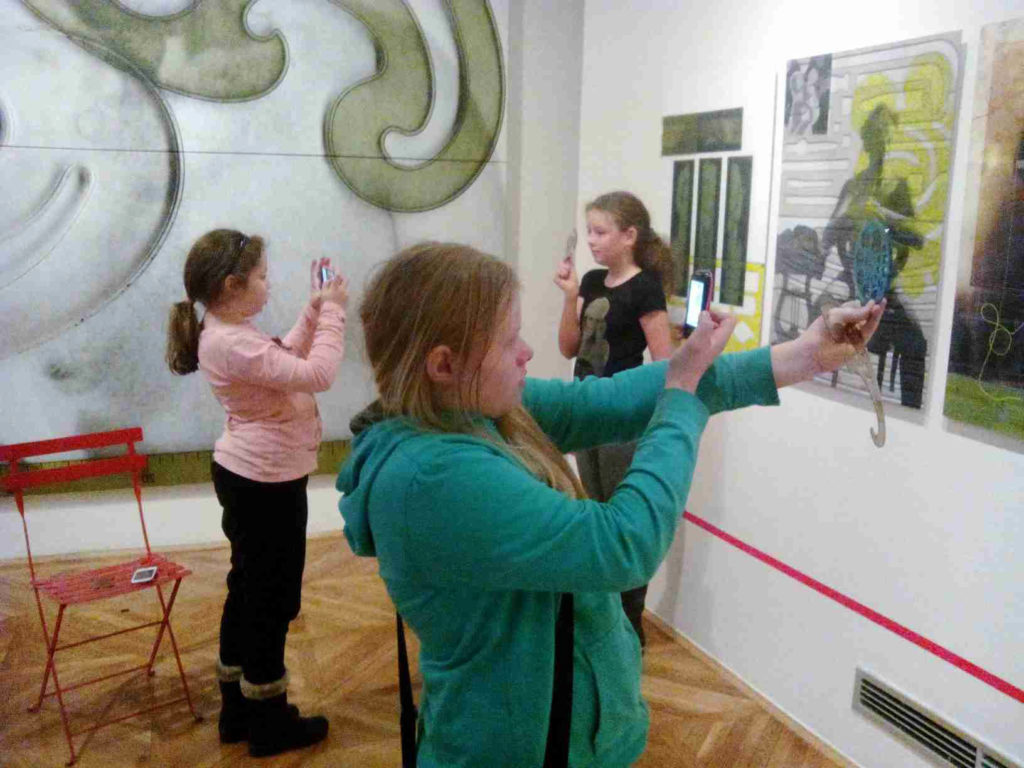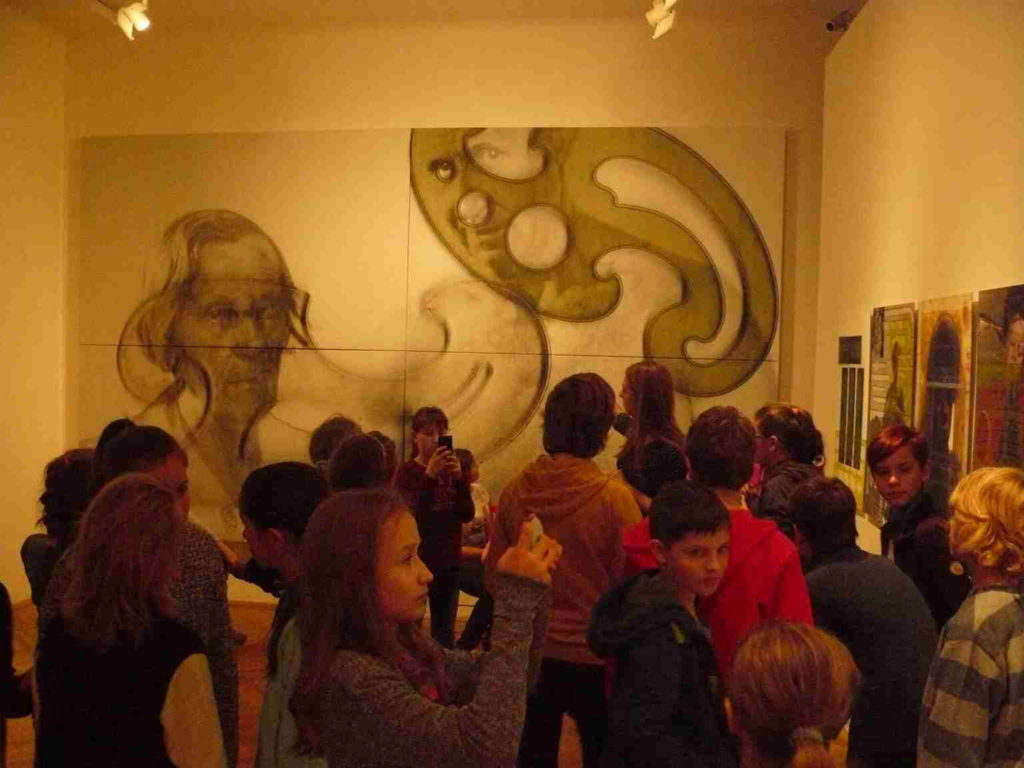Photographic art games in the exhibition of the photographer Milota Havránková
Website
The retrospective exhibition was organized for the jubilee of this representative of the Slovak and Czech art scene, photographer and multimedia artist. Milota Havránková (*1945) during her pedagogical activities at SUPŠ in Bratislava influenced the whole generation of Slovak photographers, who later entered the history as a “Slovak New Wave”. Her work delimits from the main streams of Slovak photography and distinguishes from the classically understood photography, the black and white document or the photographic concept by its interest in the photographic experiment, the choice of the theme and the consequent way of visual realization Exhibited works will present a continuous experiment with a photographic media, which is constantly changing.
PROJECT:
Photographic art games with a mobile phone realized in the exhibition of photographer Milota
-
1. How did the learning activity with the use of the ICT take place? What tasks do pupils have to do?
Thanks to ICT-mobile phones with camera and the use of common rulers and curves we managed to take a series of interesting photos. The participants were asked to find photos in the exhibition, which they want to change and move to new contexts. New wording of already existing photos were achieved by changing the composition and inserting another image layer in the form of a real object (transparent rulers and curves). It was followed by the photographic record by a mobile phone.
-
2. What is the used methodology?
Influence of art-centrism (in dialogue with art) and video-centrism (creating visual imagery).
-
3. Which ICT tools do you use in this project?
Mobile phones with camera.
-
4. What materials are you working with?
Transparent rulers and curves. The primary artwork were the photographs of M. Havránková.
-
5. Which parts of the project do you consider to be strategically important?
Those that lead to a deeper understanding of the artwork create a positive relationship to the art culture and develop the participants’ own creativity. The participants, thanks to this photographic game, tried to change the artwork (its composition, colour and overall tone) in a real way, without the need for subsequent postproduction in the graphics program. Mobile phone with camera has become a creative tool for creating their own interpretation of the exhibited work.
-
6. What knowledge and skills do students acquire?
Orientation in the development of arts and knowledge of art techniques (in this case photography), development of visual literacy, critical thinking, communication skills and development of own creativity.
7. What are the expected results of your activities and can they be objectively measured / observed?
A deeper understanding of the formal and content aspects of art works can be seen through the verbal reflection of the participant’s own opinion-that is, by comparing the views before and after the activity. An appropriate method is also the common final reflection of the created works of art / reactions. A positive feedback for us is also to follow up on our programs in the next school education.
-
8. How do you evaluate the experience of the use of ICT tools in education? Can it be evaluated?
In some projects, the use of ICT tools is almost irreplaceable. In activities pedagogical content must be appropriately and carefully thought out, and then ICT is an appropriate and creative tool.
-
9. If the course does not goes as expected, how do you repair individual activities?
By pedagogical improvisation.
COMMON QUESTIONS:
-
a. How did your project begin? Which needs led you to engage ICT in teaching? Which questions should be answered?
The use of ICT and new media in our projects always arises from the need for the greatest possible connection to the formal and content aspects of the artistic works that are the basis of our creative activities. Using ICT can increase the attractiveness of the task and the enthusiasm of the participants. As a result, a positive experience is emerging within the participants and that leads to the successful development of their knowledge and skills.
-
b. What is innovative in your project?
We always try to give a maximum space for participant’ own creativity. We use basic and easily accessible resources (PC, data projector and digital camera, a regular printer connected to a PC).
-
c. What basic knowledge do you think students have to have for successful completion of your education? How do these knowledge apply during the course?
Totally minimal knowledge of ICT tools. We will explain everything they need to know during the task. Before the task there is motivation and communication of important information (content of curriculum).
-
d. Is there something that came up during the lesson and was surprising for you?
Participants’ own creativity can sometimes shift the task into other, high-quality dimensions. E.g. Production of own props
-
e. What do you think is the link between your project, media competence and active citizenship?
Creative use of ICT and new media for own creative expression. There is a development of visual and medial literacy and development of perceptual sensitivity. Connecting classical and contemporary art.



